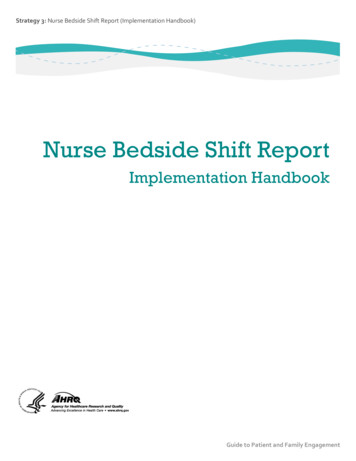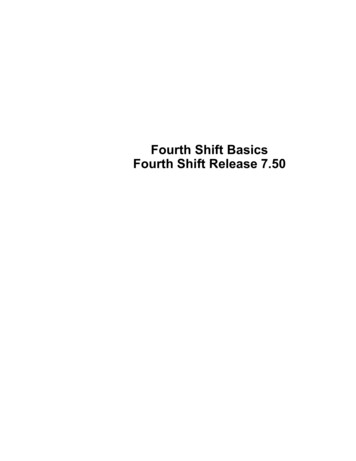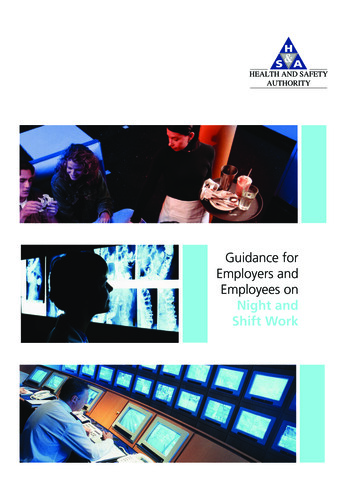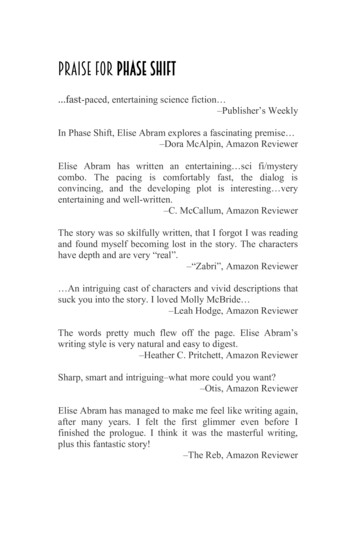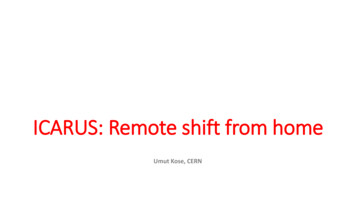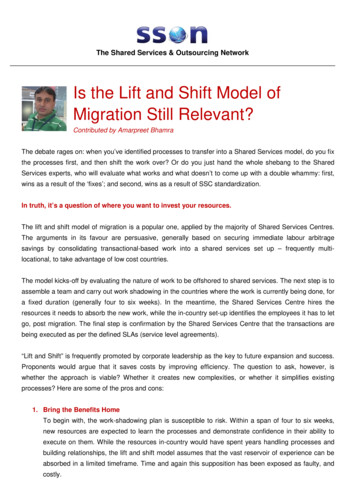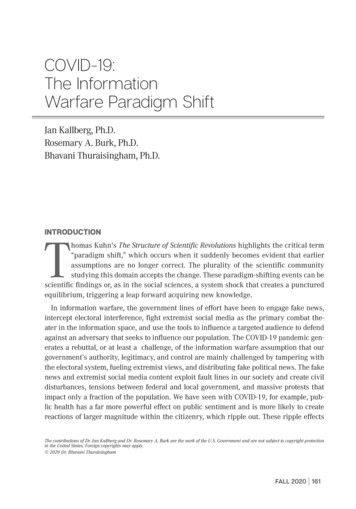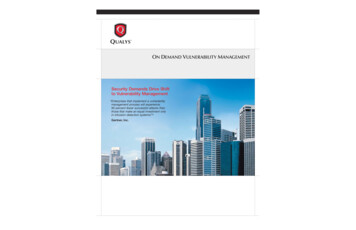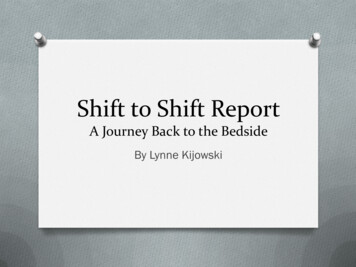
Transcription
Shift to Shift ReportA Journey Back to the BedsideBy Lynne Kijowski
Bedside Shift to Shift ReportCONNECTED
Why?O Joint Commission standards 2009 NationalOOOOPatient Safety goals: patient identification,improve communication among caregivers, andencourage patient’s active involvement in theirown care.Collaborative model-patients are more involvedin their care.Magnet redesiginationRelationship based care is more patientfocused. Patient and family must be aparticipating member in their plan of care.Patient safety
Relationship Based CareDelivery ModelO Relationship based care is a model of nursing carepractice that UPMC St. Margaret recognizes as its coreof nursing care expectations and achievements.O Relationship Based Care (RBC) is the patient-focusedcare model chosen by UPMC St. Margaret as itsProfessional Practice Model (PPM) which places thepatient at the center of all concerns.O Return practice of nursing to basic purpose: caring andconnecting with other human beings.O Incorporates three crucial relationships.Relationship between nurse and patientNurses’ relationship with coworkersNurses’ relationship with herself.
What is being measuredO Press Ganey question- How well nurses keptyou informed.O Overtime (previous studies show it willdecrease).O Nurse satisfaction (pre and post survey).
Bedside ReportO Definition-nurses providing shift-to-shiftreport at the patients bedside so the patientcan be more involved in his or her care.
What is in it for me?O Ability to visualize patients immediately and priorOOOOOto shift.You are better prepared to answer physicianquestions.Real-time conversations.Self accountability and coworker accountabilityMore time (evidence that bedside reportdecreased overtime).Improved staff interaction/communicationbetween all shifts
What is in it for the patient?O Assures the patient that staff work as aOOOOteam and plan of care is shared.Patients can add to discussion.Brings patient close to the goal of decisionmaking.Increased patient satisfaction.Better communication means increasedpatient safety
ChallengesO HIPPAO What if patient wants information you cannot give them.O Nurse not ready for report.O Patients and family requests while givingreport.O Multiple nurses to report to.
SolutionsO Move am huddle to 8:30am.O HUCS to take message for tests at shiftchange. HUC to tell primary nurse and andfloat aide about stat tests at shift change.O Phones are to be handed off at end of shift.O Admissions after 7:00, 3:00, 11:00 will bethe responsibility of the next shift.
Bedside Report Ground RulesBedside Report RulesOOOOReport times are:7:103:1011:10O Both oncoming and off going shifts should be prepared forreport at these times. The only exception is a condition oremergent situation.O Stay focused on the facts. Remember the off going shiftwants to go home and the oncoming wants to get to work.O Viewing the caredex should only take 5-10 minutes, please beready for report at 10 minutes after the start of your shift.
Bedside Report Rulescont.O Resource nurse will place 12 hour nurses atthe end of team one and the beginning ofteam two. If at all possible 8 hour nursesshould never be assigned to short hall. Thiswill help make assignment more continuousand decrease the number of nurses thatone nurse will have to give report to.
Bedside Shift Report Using SBAR (T) FormatS Situation B-Background A Assessment R Recommendation T Thank YouOffgoing Nurse“I am going home now. --------- will be your nurse for the next shift.Oncoming NurseIN PATIENTIntroduce self-using AIDET (Acknowledge, Introduce, Duration, Explanation, Thank you)ROOMUpdate white boardCheck armband while asking patient to state his/her name and date of birth.Offgoing NurseGive an update on patient’s chief complaint and what treatments/medications have been provided.Update on any pending tests or treatments (i.e. lab/radiology)OUTSDE OFDiscuss any special needs (i.e. altered mental status, fall risk, isolation precautions)ROOMOncoming NurseAsk any questions of offgoing nurseSBOffgoing NurseGive explanation-“We are going to do a quick physical assessment together since we are changing shifts”.Inform oncoming nurse of what you have assessed and or noted during your shift.IN PATIENTInclude any information on tasks that you have completed.ROOMMentions what the oncoming nurse will need to complete or follow-up on.Oncoming NurseReview EMARConduct a quick physical assessment and check all IV sites/pumps for accuracy.Assess patients pain using a pain scaleAROUTSIDEOF ROOMOffgoing nurseReview plan of care with oncoming nurse (tests, treatments, medications.Include any relevant medications that have been ordered and any ancillary or support services that are working with the patient such asrespiratory therapy, radiology, social service, PT, OT, etc.Ask the patient “Do you have any questions? Is there anything else the nurse needs to know at this time?Oncoming NurseValidate plan of care.Thank the patientOffgoing Nurse-Prior to leaving the room, ask the patient the followingIn your pain under control?IN PATIENTDo you understand your plan of care?ROOMDo you know what you are waiting for and what will happen next?Do you have any concerns we can address?Use closing key wordsOffgoing nurse-“---------- will take very good care of you. Thank you for allowing me to care for you today”.Oncoming nurse-“Is there anything you need right now? I’ll be back to check on you in about an hour.”T
of nursing care expectations and achievements. O Relationship Based Care (RBC) is the patient-focused care model chosen by UPMC St. Margaret as its Professional Practice Model (PPM) which places the patient at the center of all concerns. O Return practice of nursing to basic purpose: caring and connecting with other human beings.File Size: 735KBPage Count: 13
